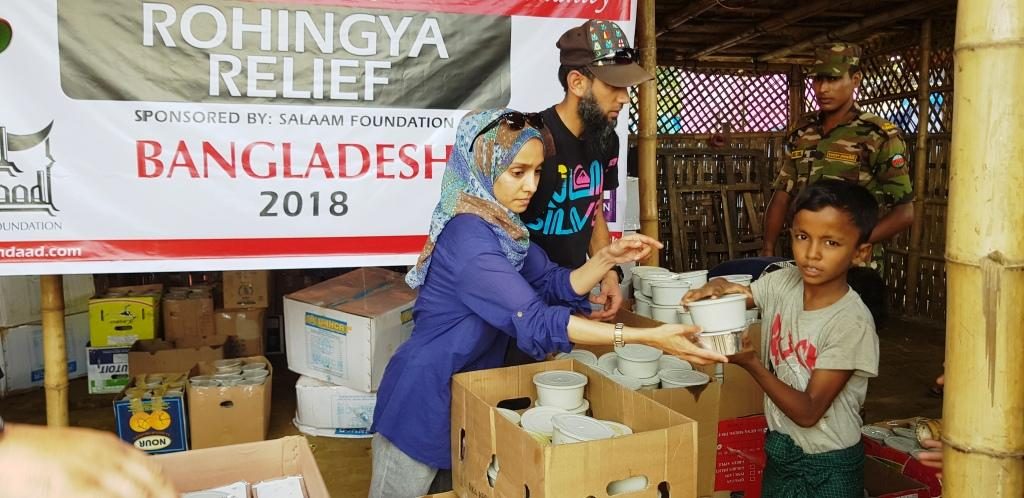Salaam Foundation | 13 August 2018
There is some improvement in the refugee camps from the initial days when thousands of Rohingya people fled the brutal onslaught of the Myanmar army in 2017.
The genocidal attacks last year the Rohingya around 600 000 of them to take refuge in neighbouring Bangladesh but now, one year later, this has ballooned to over 1,4 million people with some agencies saying the number of refugees is closer to 2 million.
In a country with limited resources like Bangladesh, it’s never going to be easy for undocumented, highly traumatised homeless people with no possessions.

Food distribution , Unchiprang refugee camp
The camps have extended to accommodate the new arrivals and aid agencies have settled within them to form the basis for relief aid.
Over the cause of one year the muddy slopes down the hills have become a little more navigable through the provision of temporary staircases and sand sacks. The entrepreneurial spirit has kicked in and small shops with basic amenities have developed.
The sprouting of the aid agencies is indicative of their intention to stay for a long time as the refugees for now seem like they have no other option but to remain put.
But basic human needs are still a major concern. Hunger abounds, health care is extremely rudimentary, new sets of clothing are extremely difficult to come by and social ills have used the opportunity to proliferate.
Trauma cases of women and children expose themselves each day and many of the most vulnerable have found themselves trafficked out of the camps and into the busy streets of Cox’s Bazar into a flourishing sex trade industry.
It is into this scenario that the Salaam Foundation team travelled to Bangladesh and interacted with the Rohingya refugees.
Through our multiple partner programmes that included Pulse Bangladesh and Al Imdaad Foundation, we managed to successfully implement several projects.

Hungry kids wait for food, Unchiprang refugee camp
Over 1000 children were fed with hot meals and 416 families received clothing packs that included children’s clothing, the abaya and hijab or cloaks and scarves for women and the lungi or loin cloth for men.
We also spent important moments interacting with the traumatised survivors of the genocide, particularly women who spoke of the horror of their experience.
In a series of articles we will document what they went through. For now our work in highlighting the realities of what people have experienced and their current situation will continue.
To support these projects you can donate to:
Salaam Foundation
FNB
62669147665
Ref: ROH (zakat/lillah)
